 Covering COVID-19 is a daily Poynter briefing of story ideas about the coronavirus and other timely topics for journalists, written by senior faculty Al Tompkins. Sign up here to have it delivered to your inbox every weekday morning.
Covering COVID-19 is a daily Poynter briefing of story ideas about the coronavirus and other timely topics for journalists, written by senior faculty Al Tompkins. Sign up here to have it delivered to your inbox every weekday morning.
Let me start this column by reminding you that most Americans want the COVID-19 vaccine as soon as possible. And the percentage of people who want the vaccine has grown a lot since last fall, before there was an approved vaccine.
The Kaiser Family Foundation has data showing that people in rural America are the most reluctant to get a coronavirus vaccination.
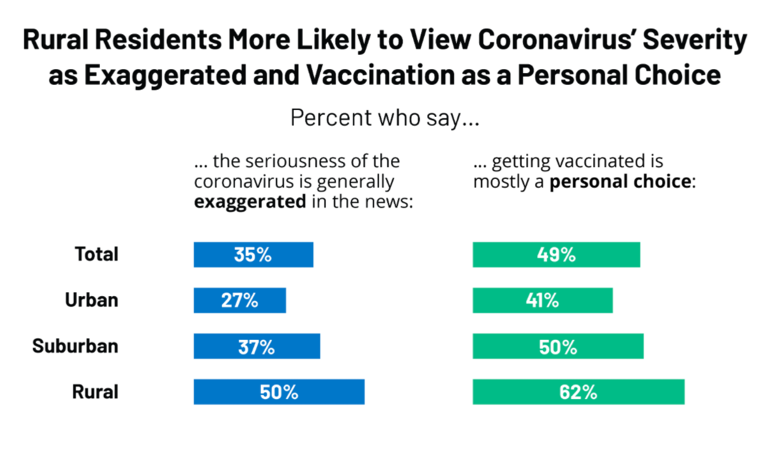
(KFF)
Kaiser points out that there is a direct link between political leanings and attitudes toward this vaccine, and rural Americans are more likely to lean Republican.
But there is more to it than that. Kaiser explains what the data says:
While rural residents are just as likely as those living in urban and suburban communities to know someone who has tested positive or died from coronavirus, four in ten rural residents (39%) say they are not worried they or someone in their family will get sick from the coronavirus, compared to 23% of urban residents and three in ten suburban residents (30%). In addition, half of rural residents say the seriousness of coronavirus is “generally exaggerated” compared to 27% of urban residents and 37% of suburban residents.
And, for rural residents, getting a COVID-19 vaccine is seen more as a personal choice (62%) than as part “of everyone’s responsibility to protect the health of others” (36%). A majority of urban residents (55%) say getting vaccinated is part of everyone’s responsibility as do nearly half of suburban residents (47%).
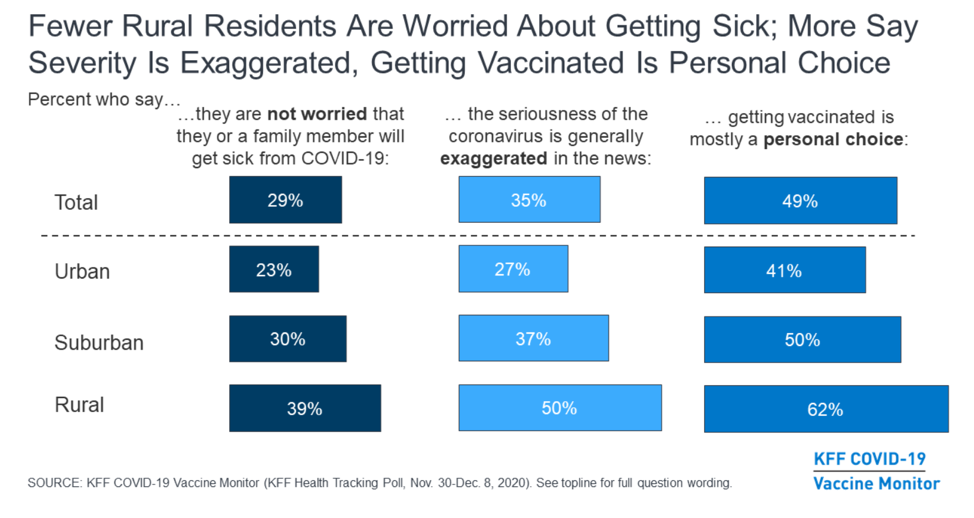
(KFF)
Kaiser’s polling shows the main source of reliable information for rural Americans is their own doctor.
When it comes to reaching rural residents, a large majority of rural Americans (86%) say they trust their own doctor or health care provider to provide reliable information about a COVID-19 vaccine. Smaller shares say they trust the FDA (68%), the CDC (66%), their local public health department (64%), Dr. Fauci (59%), or state government officials (55%).
Encouraging news: tests show vaccines work against mutations, so far
Start the week with a bit of encouraging news. Pfizer and BioNTech say new studies show approved vaccines still work against the mutating versions of the coronavirus.
In the study, scientists engineered a version of the virus to include the mutation called N501Y. The mutation is found in variants that seem to transmit faster than other forms of the virus, including one first identified in the United Kingdom that is now spreading in other countries, including the United States.
The scientists then compared how well blood taken from 20 people who had received the vaccine fended off the mutated form of the virus versus an earlier form. Their finding: there was “no reduction in neutralization activity against the virus” with the mutation, they wrote.
Pfizer and the University of Texas Medical Branch conducted the research, which has yet to be peer-reviewed.
But the mutations might keep changing enough to require adjustments in the vaccines eventually. Philip R. Dormitzer, Pfizer’s vice president and chief scientific officer of viral vaccines said, “These data don’t suggest a need for a change, but the mutations are hitting close enough to home that we need to be prepared.”
The White House coronavirus task force says, so far, there is no evidence of a uniquely American variant of the virus, which is to say the variant that has shown up in a handful of states so far, and is spreading, is the same one that emerged in Britain. Here is a quote from the report:
“This fall/winter surge has been at nearly twice the rate of rise of cases as the spring and summer surges. This acceleration suggests there may be a USA variant that has evolved here, in addition to the UK variant that is already spreading in our communities and may be 50% more transmissible,” the report said.
So far, there are 63 known cases of the variant strain of COVID-19:
- 32 cases in California
- 22 cases in Florida
- three cases in Colorado
- two cases in Connecticut
- one case each in Georgia, New York, Texas and Pennsylvania
Now for a little background. The early evidence is that the new mutations are not more deadly but may be more easily transmitted than earlier versions. And keep this in mind: Mutations are not unexpected. Time explains:
Fortunately, coronaviruses in particular generate these genetic mistakes more slowly than their cousins like influenza and HIV—scientists sequencing thousands of samples of SARS-CoV-2 from COVID-19 patients found that the virus makes about two errors a month. Still, that’s led so far to about 12,000 known mutations in SARS-CoV-2, according to GISAID, a public genetic database of the virus. And some, by sheer chance, end up creating a greater public health threat.
Just a few months after SARS-CoV-2 was identified in China last January, for example, a new variant, called D614G, superseded the original strain. This new version became the dominant one that infected much of Europe, North America and South America.
Biden says he will not hold back second doses
President-elect Joe Biden announced a significant decision that he says will happen as soon as he takes office. He said his administration will not hold back millions of vaccines that will be needed to give second doses to patients. Biden will count on the drug companies to produce vaccines fast enough to have second doses available when people are due for them, but he says the need to get more people vaccinated with the first dose is too urgent to hold anything back.
Right now, however, that is not the main issue. We will get new numbers from the Centers for Disease Control and Prevention today, but only about a fourth of the vaccines already distributed to states have made it to people. The government shipped four million doses to long-term care facilities, but they have only administered about 700,000 shots so far. The CDC updates the data Mondays, Wednesdays and Fridays.
COVID-19 in schools
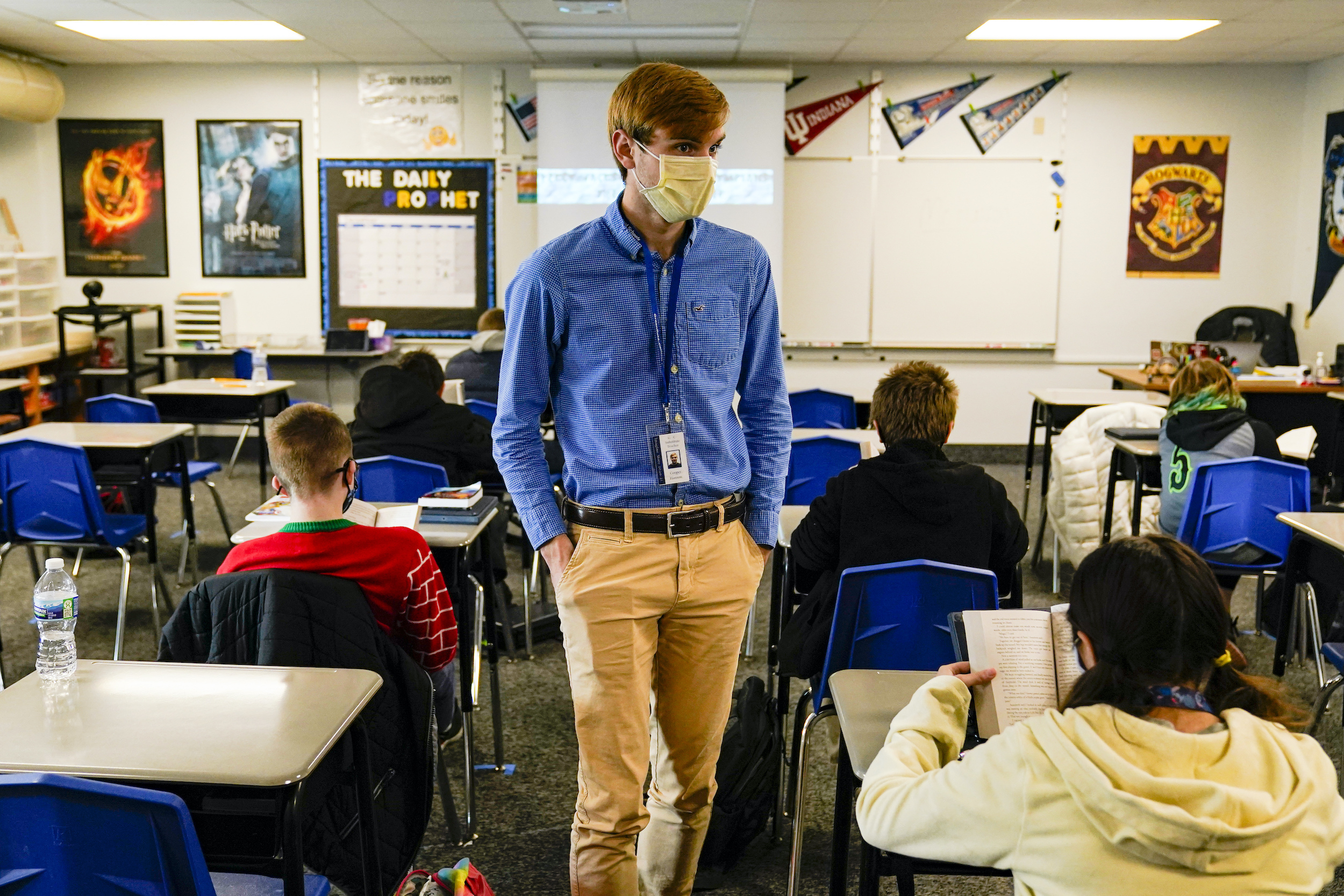
Cooper Hanson, a substitute teacher at the Greenfield Intermediate School in Greenfield, Ind., is photographed Thursday, Dec. 10, 2020. (AP Photo/Michael Conroy)
Here in Tampa Bay, where I am, the number of known COVID-19 cases in schools is soaring even while students head back to classrooms. The schools say it is because students and staff were exposed outside of classrooms.
Here are three reputable studies that all conclude school classrooms present a fairly low risk of spreading the coronavirus as long as schools follow approved safety measures.
The Orange County (California) Register describes how schools there are planning to reopen to in-person learning in February:
California’s schools have been among the slowest in the country to reopen, frustrated parents observe. But is it realistic to expect wide-scale reopening this spring — particularly if educators haven’t started getting vaccinated?
California Gov. Gavin Newsom just proposed $4.6 billion for summer school and extra learning time that he says lots of students will need to make up for what they missed in the current school year. Journalists, this is an issue that is worth looking at as governors roll out their 2021-22 budgets.
A campaign to make vaccine photos less scary
After Friday’s post about how many people have needle phobias and say the media’s images of people getting shots are freaking them out, I got a note from Tess Feldhausen, who writes:
It reminded me that, a few years ago, Self Magazine partnered with the American Academy of Pediatrics to produce a series of free, accurate, diverse, and more positive images showing vaccinations. I thought you might like to let folks know.
The stock images look like this:
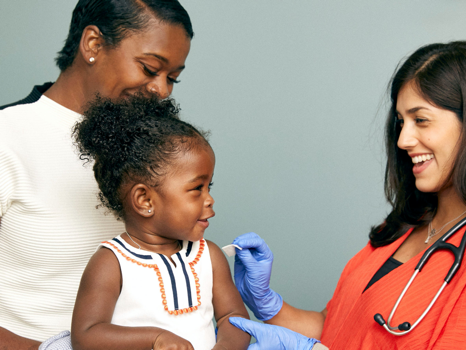
(Stock image from Self Magazine)
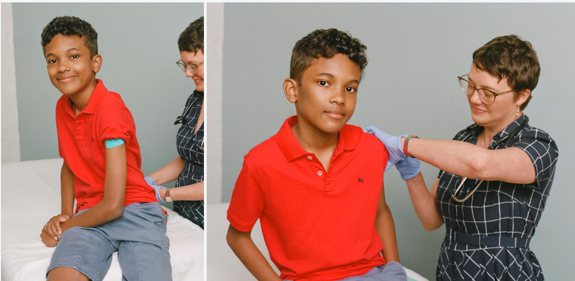
(Stock images from Self Magazine)
A story that goes along with the free stock images says:
The stock photography commonly used in stories about vaccines are often medically inaccurate in a range of ways, from showing the wrong syringes to showing shots being administered incorrectly. In addition to that, you typically see a lot of crying babies, anxious-looking patients, and close-up shots of oversized needles. While it’s no secret that getting a shot isn’t usually a fun experience, imagery that’s frightening and inaccurate only further perpetuates the idea that vaccines are just scary, painful, and something both parents and their children dread. And look, there might be some truth to that — lots of people dislike needles. But it’s also true that vaccines save lives.
But using stock images like this raises all sorts of ethical issues for journalists. They may or may not be real images of people getting vaccines. They may not be real reactions to shots but instead are actors giving staged reactions. The supplier of the image has a stake in their use, including the way the information is portrayed. And it is just a lazy way to “do journalism.” The length of disclosure a journalist would have to ethically include in a caption cutline would be enough to dissuade anybody from using them. On top of the ethics of using the stock images, the job of a journalist is to document truth, not to convince people to get a shot.
The biggest value of these images, to me, is a reminder that photojournalism has such power to shape our perceptions.
Can a president pardon himself/herself? The answer may be hidden in a grammar lesson.
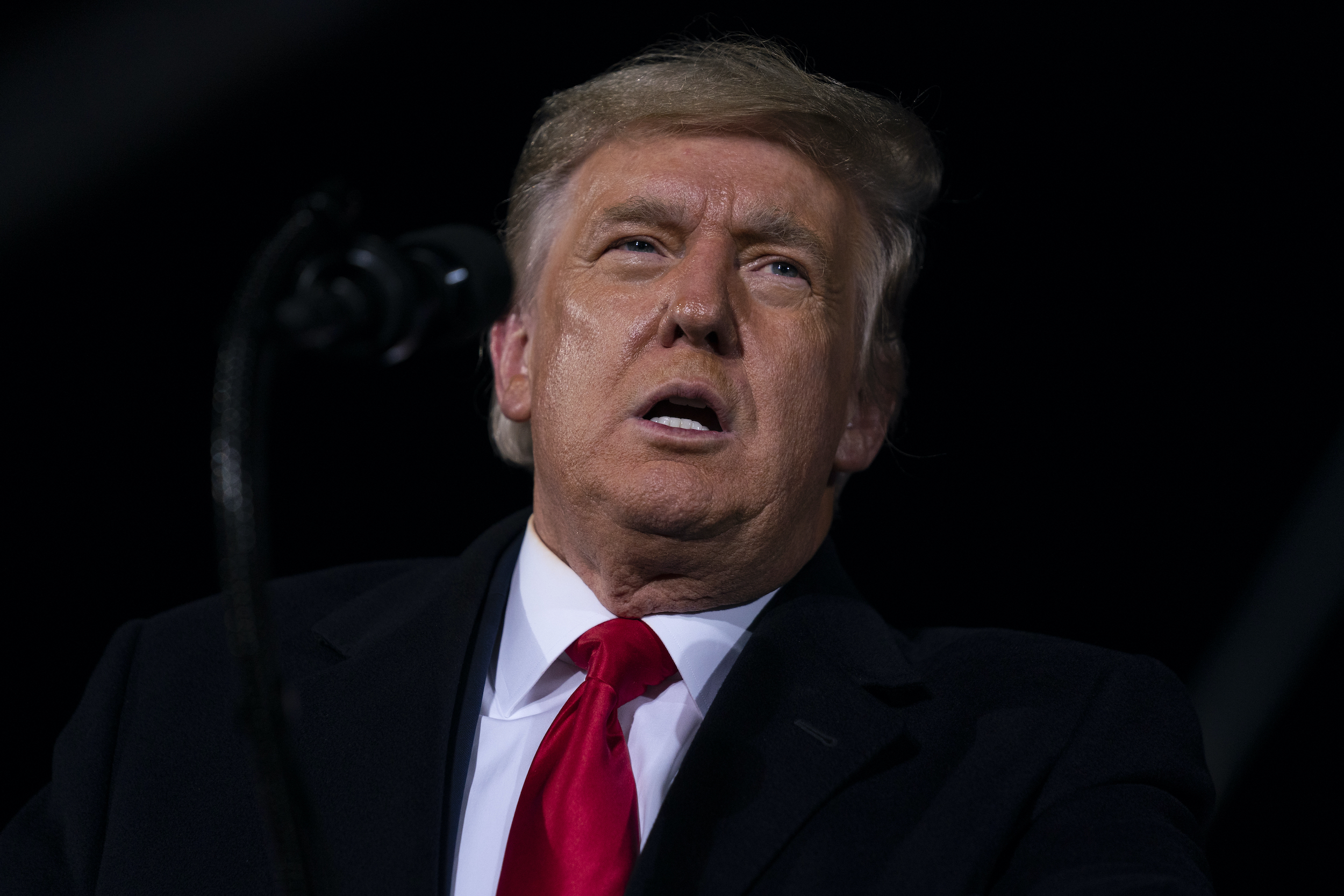
President Donald Trump speaks during a campaign rally for Sen. Kelly Loeffler, R-Ga., and David Perdue at Dalton Regional Airport, Monday, Jan. 4, 2021, in Dalton, Ga. (AP Photo/Evan Vucci)
One of the interesting conversations of the day is whether presidents can issue pardons for themselves to protect against any future criminal charges they might face after leaving office. I will walk you down the legal path but first, a nerd warning: A grammar lesson is embedded in this analysis.
A number of news organizations have reported that President Donald Trump is considering a range of pardons for friends, family and himself and would announce the pardons Jan. 19, his last full day in office.
What is there to pardon? Bloomberg lists the possibilities:
A self-pardon could shield Trump from prosecution over a myriad of issues his political opponents have suggested could be worthy of prosecution, from his federal income tax filings to hush money payments to an adult film star to his inaugural committee’s spending at venues owned by the Trump family.
Some Democrats have continued to say Trump should face legal scrutiny over the Russian interference campaign during the 2016 election, despite Special Counsel Robert Mueller finding no evidence the president colluded with the Kremlin. And in recent days, Trump has drawn scrutiny over his effort to pressure officials in Georgia to overturn the results of the presidential election there, as well as inciting what became a violent mob that stormed the U.S. Capitol.
What does Article II, Section 2 of the Constitution say?
… and he shall have Power to grant Reprieves and Pardons for Offenses against the United States, except in Cases of Impeachment.
Keep in mind, that is saying presidential pardons only apply to federal offenses. There is at least one open fraud inquiry in New York where prosecutors are looking into the president’s businesses, and the Manhattan district attorney is working on a criminal prosecution against the president.
In 1974, one other period of American history when the president’s job was in peril, the U.S. Department of Justice offered guidance on the limitations of a presidential pardon. In short, there are limits. The summary said:
Under the fundamental rule that no one may be a judge in his own case, the President cannot pardon himself.
That seems clear enough. But, as the TV commercial goes, “Wait … there’s more.” The DOJ imagined what might happen if the president enacted the 25th Amendment, stepped down for a bit, the vice president then acting as president pardoned the president, then the president took over again. It is all a murky question, The DOJ admitted:
If under the Twenty-Fifth Amendment the President declared that he was temporarily unable to perform the duties of the office, the Vice President would become Acting President and as such could pardon the President. Thereafter the President could either resign or resume the duties of his office.
But what about Congress’ power to pardon a president? In the 1970s, Congress wanted to know if it could pardon Vietnam War protesters. The answer was, “no.”
Although as a general matter Congress cannot enact amnesty or pardoning legislation, because to do so would interfere with the pardoning power vested expressly in the President by the Constitution, it could be argued that a congressional pardon granted to the President would not interfere with the President’s pardoning power because that power does not extend to the President himself.
But if you read that closely, you will see a hole. If the president does not have the power to pardon himself, then Congress would not be interfering with such a power, and might be able to pull it off.
If you are a strict constitutionalist, you are looking not just for what the Constitution says, but what it does NOT say. Again, back to the Bloomberg article:
Brian Kalt, a professor at Michigan State University College of Law who has written extensively about self-pardons, said it’s not clear whether the president can do it.
“The main argument in favor of the self-pardon power is that the Constitution does not expressly rule it out, and that the pardon power is extremely expansive,” he said.
“The argument against self-pardonability starts with the idea that granting a pardon is, by definition, something one can only do to another person,” Kalt said. “There is also a general principle in the law against being the judge in one’s own case.”
And, because you journalists are grammar nerds, you might like this reasoning. Nick Akerman, a former Watergate prosecutor, points us back to the phrase I referenced above, “shall have Power to grant Reprieves and Pardons.” Akerman keys in on that word “grant” and says “grant” means it is something a president bestows on others. Wait for it, there is a grammar lesson coming up.
“It’s a transitive verb, the object of which is somebody other than the person doing the granting,” he said. “Linguistically, it doesn’t make sense that you can pardon yourself.”
Since I do not know what a “transitive verb” is, I hereby kick the question over to my studious Poynter colleague Roy Peter Clark, the author of “The Glamour of Grammar,” to explain. Roy’s first sentence may be the most important:
The word refers to the transfer of action from subject to verb. A transitive verb takes an object. An intransitive verb does not. But here is a wrinkle: the same verb can be transitive: “He wept bitter tears.” And intransitive: “Jesus wept.” I once argued that the verb “knelt” was intransitive. Until some wise guy sent me the sentence: “The trainer knelt the elephant before the prince.”
There is another, perhaps more significant grammatical distinction: the reflexive pronoun. I just looked up the word “myself.” The dictionary says it can be used reflexively, either as the direct or indirect object of a verb. “I love myself. I respect myself. I pardon myself.”
OK, I have it.
Class dismissed. Or using the transitive, “I dismiss class.”
Go deeper
My colleagues at PolitiFact dove into the power of presidential pardons. You will also see a long list of sources they used in their research to help you report this story.
We’ll be back tomorrow with a new edition of Covering COVID-19. Sign up here to get it delivered right to your inbox.







